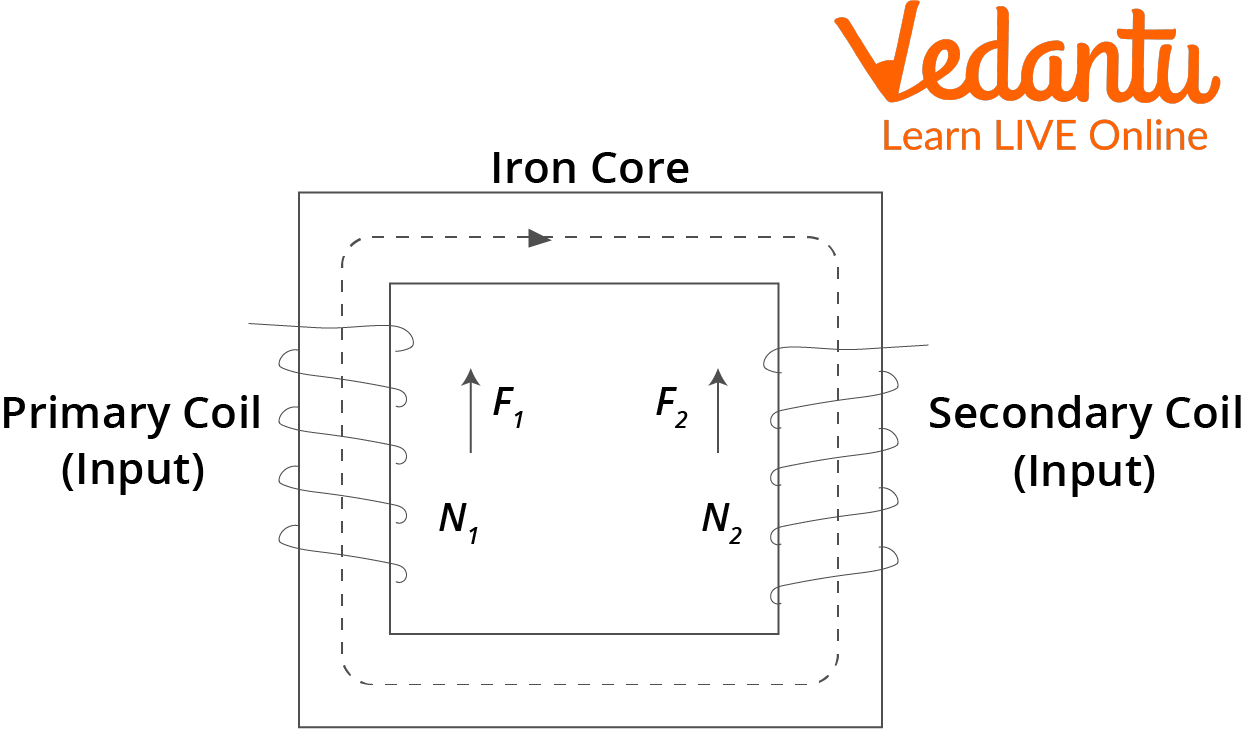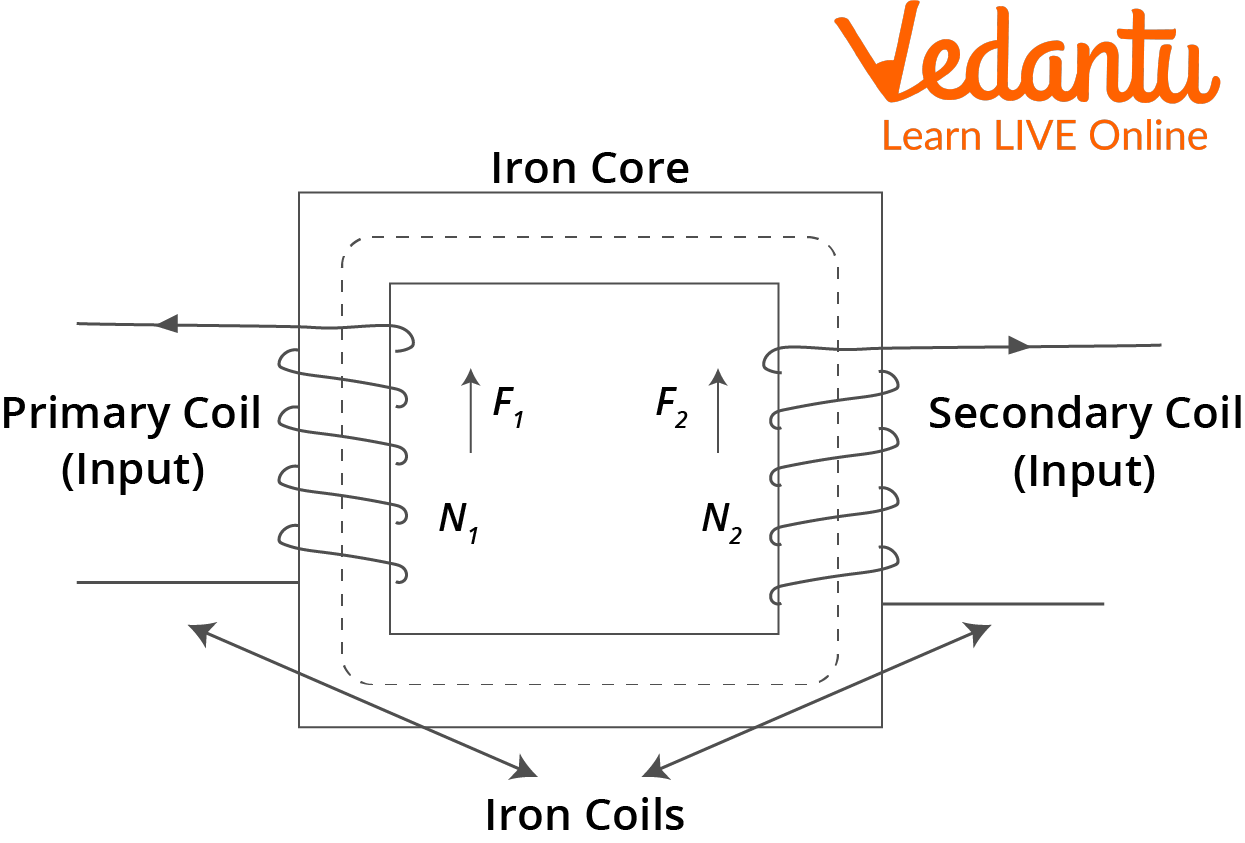




Introduction
The transformer in electricity is a device that steps up or down voltage. The output voltage goes up in a step-up transformer while it goes down in a step-down transformer. The step-up transformer will increase the output current, and the step-down transformer will decrease the output current to keep the input and output power of the system equal.
The transformer mainly controls voltage to distribute and send alternating current power. In 1831, Michael Faraday was the first to talk about a transformer, which many other well-known scientists then took up. The main transformers were used to balance electricity made at very high voltages and electricity used at very low voltages.
What is a Transformer?

Transformer
A transformer is a device that moves electricity from one circuit to another without changing the frequency. It does this through electromagnetic induction. Transformers are an essential part of systems that use electricity.
Transformers come in a wide range of sizes, from the tiny coupling transformer in a stage microphone to the big transformers in power grids carrying hundreds of MVA. The main reason to use a transformer is to change electricity from one voltage level to another.
High voltage is easier to send over long distances, but lower voltage is easier and safer to use in the office or home. Alternating current (AC) voltage can be increased or decreased with the help of a transformer.
Most transformers have two coils wrapped around the same core. The primary coil, also known as the "input coil," is connected to the supply side, and the secondary coil is connected to the load. The output coil is the second one.
Electromagnetism is the way that energy moves from the primary to the secondary. Many transformers are used in power grids. These networks move electricity from where it is made to where it is used.
Transformer Principle
The transformer operates according to the principles of electromagnetic induction and mutual induction, as stated by Faraday.
There are often two coils on the transformer core: the primary and secondary coils. The mutual inductance of the two coils is very high. When an alternating current flows through the primary coil, a changing magnetic flux is created.
Faraday's law of electromagnetic induction says that this change in magnetic flux causes an emf (electromotive force) in the secondary coil, which is connected to the core with a primary coil. It's called mutual induction, and this is how power transformers work.
In general, a transformer does the following:
Getting electricity from one circuit to another
Induction of electricity through electromagnetic fields
Transferring electricity without changing the frequency
Mutual induction connects two circuits.
Uses of Transformer

The use of a transformer
Transformers transfer current without physical touch or changing frequency. Depending on the type, there are different ways to use a transformer. The use of the transformer is as follows:
A transformer-regulated current flow fuels chemical engineerings processes like electrolysis and electroplating. Reaction regulates the current flow.
Melting and welding demand high currents, whereas cooling requires lower currents. Transformers manage the current throughout these procedures.
Transformers charge batteries. Only a transformer can manage voltage correctly to avoid damaging battery components.
Transformers in circuit breakers help start and stop current flow using a switch, protecting against high-voltage damage.
Transformers control alternating currents, which increases efficiency and lowers energy expenditures.
Transformer Facts
In 1880, the idea of making electrical transformers came up.
Many countries increase the voltage to 500,000 volts (500KV) to send electricity thousands of kilometres away.
You can't use direct current in a transformer because direct current doesn't produce a changing magnetic field.
Conclusion
Simply put, a transformer is a device that either increases or decreases voltage. This is what we have discussed. Moreover, one kind of transformer, a step-up, raises the output voltage while another, a step-down, lowers it. To maintain a constant output power from a given input power, a step-up transformer may reduce the output current, and a step-down transformer can raise it.
FAQs on Detailed Overview of Transformer Facts
1. How does a step-up transformer work?
A step-up transformer is a type of transformer that raises the voltage of an electric current. Most of the time, they are used to boost the voltage from the low-voltage distribution lines of the utility company to the high voltage that most industrial and commercial electric loads need. Step-up transformers are also used to boost the voltage of electric railway systems and overhead electric power transmission lines.
2. What does a step-down transformer do?
A step-down transformer is a transformer that lowers the voltage of an alternating current (AC). AC is the type of electricity that most homes and businesses get. A step-down transformer reduces the voltage of the AC so that it is safer and easier to use in your home or office.
3. What is a stabiliser for voltage?
A voltage stabiliser is a transformer that keeps the voltage level constant. This is especially important near electrical generators and equipment that don't have a voltage stabiliser. You can also call a voltage stabiliser a voltage regulator or voltage protector.









